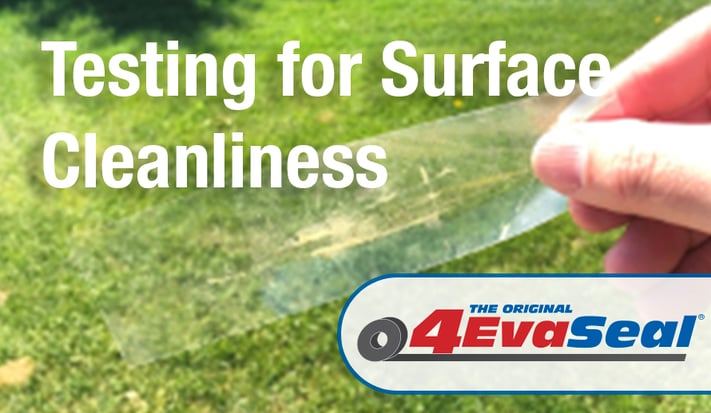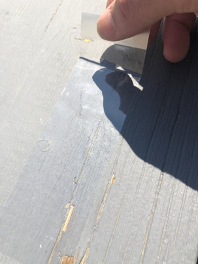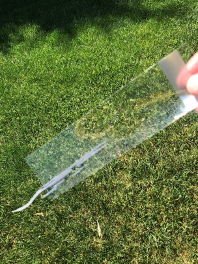 Self-adhesive waterproofing tapes bond to substrates with greater force when the substrates are clean and dry and the tapes are applied in warm temperatures. Obtaining a clean surface is the most critical part of the job, and checking the surface cleanliness of often overlooked. Avoid this common mistake by following these instructions for cleaning and testing the surface for cleanliness.
Self-adhesive waterproofing tapes bond to substrates with greater force when the substrates are clean and dry and the tapes are applied in warm temperatures. Obtaining a clean surface is the most critical part of the job, and checking the surface cleanliness of often overlooked. Avoid this common mistake by following these instructions for cleaning and testing the surface for cleanliness.
Initial Surface Cleaning
Outdoor substrates like roof membranes, metals, plastics and painted surfaces collect dirt that can become embedded in the surfaces. The surfaces on these materials can also be dusty or chalky from UV exposure.
Virgin substrates like wood and concrete are porous and can collect dirt and retain water.
Using water and a detergent is a common method for removing heavy dirt from surfaces. Pressure washing or scrubbing with the detergent solution provides the best results.
Difficult-to-remove, embedded dirt and staining may require a more aggressive cleaner or abrasive. On nonporous surfaces, a solvent cleaner is often used.
Tips for cleaning:
- Thoroughly rinse the area with fresh water to remove all soap or detergent residue.
- Do not saturate surfaces or areas that may contain leaks as the water intrusion may lead to further damage.
- Allow sufficient time for ALL the water and moisture to dry. It may take a day or multiple days for the area to completely dry depending on the substrate and environmental conditions.
Here’s an easy test to determine if the surface is clean and dry enough for a waterproofing tape to achieve a strong bond.
Clear Tape or Packing Tape Test
|
Image: Step 1: Check for dust and dirt |
The goal of this test is to determine if the tape can bond sufficiently and to check the surface for remaining dirt and dust.
Prior to running the test, give the surface a quick wipe with your fingertips to see if any dirt or dust can be transferred to your fingers. If dust is present, it is recommended that the surface be wiped clean with a damp rag or solvent.
If no dust/dirt is present or there is very little detectable contamination, the tape test can be conducted.
Apply a clear piece of packing tape to the surface. Typically, a piece about 6 inches in length is sufficient. Apply 4-5 inches of the tape and hold on to the remaining 1-2 inches. Rub the tape into the surface so that it makes full contact. Slowly peel it off the surface.
|
Image- The tape test will reveal the presence of dirt or dust. |
If the tape is easy to remove or contains visible dirt, the surface will require further cleaning. If you are unsure about the ease of removal, gauge the strength of the adhesive on the packing tape. This can be done by applying it to a clean glass surface and removing it. If the tape bonds to the substrate at a strength similar to clean glass, the surface tape has bonded well.
Testing painted surfaces may result in removal of paint when performing this test. If this occurs, the painted surface is not suitable for the waterproofing tape. The poorly adhered paint will need to be removed to get a strong bond between the waterproofing tape and the surface.
|
Step 1. Testing a painted wood surface
Step 2. Removing the tape reveals poorly adhered paint.
|
Final Recommendations
Make sure the waterproofing tape selected for the repair is suitable for use on your application and is designed to provide a long-term watertight seal. Less expensive repair tapes, flashing tapes and waterproofing tapes often provide inferior performance and limited bond strength or lack of UV stability. Choosing the right waterproofing tape is equally as important as the surface preparation.











